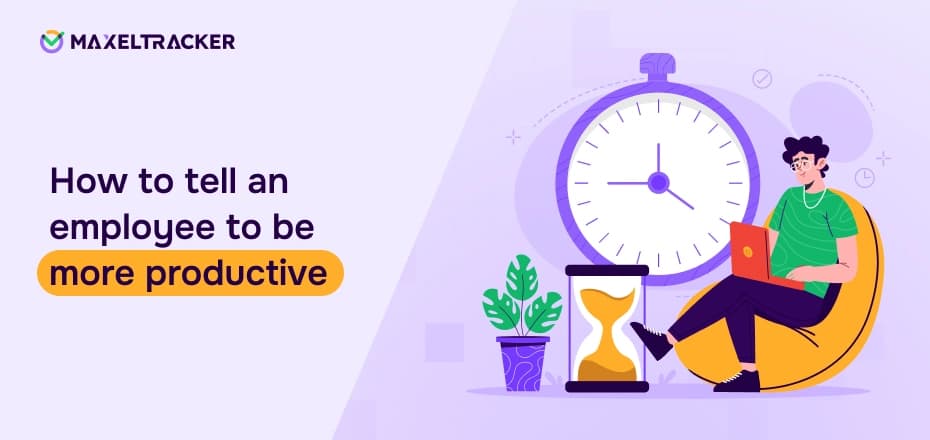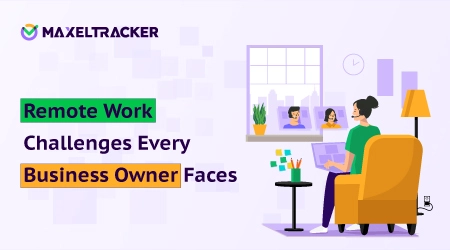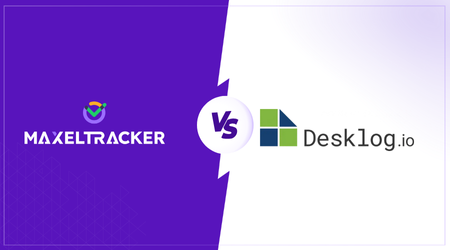

Talking to an employee about productivity can feel like walking a tightrope. You want to address performance issues without discouraging them or creating unnecessary tension. The reality is, productivity isn’t just about working harder—it’s about working smarter. When approached the right way, this conversation can lead to meaningful improvements for both the employee and the company.
The key? Focusing on clear expectations, identifying obstacles, and offering support rather than criticism. Whether you're dealing with missed deadlines, distractions, or a dip in performance, the way you communicate can make all the difference. In remote or hybrid settings, remote employee monitoring software can also provide helpful context before these discussions, offering insights into work patterns and potential bottlenecks. Here’s how to have that conversation effectively.
Before addressing an employee’s productivity, it’s important to identify whether there’s a real issue. Look for these signs:
Is the employee struggling to complete tasks within the expected timeframe? Frequent delays can disrupt workflows and affect team performance.
If reports, projects, or tasks contain more errors or inconsistencies or require frequent revisions, it could indicate a drop in focus or effort.
Does the employee avoid taking ownership of tasks, contribute less in meetings, or seem disengaged? Productivity isn’t just about output—it’s also about involvement.
Excessive time spent on non-work-related activities or difficulty prioritizing tasks can lead to inefficiencies.
The key to a productive conversation about employee performance starts with preparation. Before scheduling a meeting, take the time to understand what might be affecting an employee’s output. If they’ve missed a deadline or their efficiency has dropped, consider all possible factors:
Are they receiving enough support from their team?
Are they overwhelmed with too many tasks?
Could they be experiencing burnout?
If the root cause is clear and a simple adjustment—such as redistributing tasks or providing additional resources—can resolve the issue, a formal conversation about productivity may not be necessary. However, when the reasons behind a performance issue are unclear, deeper investigation is needed.
Discussing productivity can be a delicate topic, but when handled correctly, it can lead to positive outcomes for both the employee and the company. Here’s how to approach these conversations effectively while keeping morale high.
Instead of making the discussion feel like criticism, frame it as an opportunity for improvement. Employees are more likely to be receptive when they see it as a chance to grow rather than a reprimand.
Why it matters: Employees may shut down or become defensive if they feel they’re being blamed. A positive approach encourages open dialogue and a willingness to improve.
How to say it:
I appreciate your contributions and want to ensure you’re set up for success. Let’s discuss ways to make your workload more manageable and efficient.
Vague feedback like “You need to be more productive” doesn’t provide clear direction. Instead, highlight measurable patterns, such as missed deadlines, unfinished tasks, or inefficient processes.
Why it matters: Employees can’t fix what they don’t fully understand. Providing real examples makes the issue tangible and easier to address.
How to say it:
I’ve noticed that reports have been taking longer to complete, with a few deadlines being missed in the past month. Let’s look at what might be causing delays and find a solution.
Instead of assuming the cause of lower productivity, let employees share their perspectives. They might be dealing with unclear expectations, a lack of resources, or personal challenges.
Why it matters: This approach makes the conversation feel like a partnership rather than a one-sided critique. Employees will feel heard and be more open to discussing solutions.
Effective questions to ask:
What’s been your biggest challenge in managing your tasks?
Do you feel clear about your priorities and deadlines?
Are there any obstacles preventing you from working more efficiently?
Is there any additional support or resources that would help you perform better?
Once you understand the challenges, work together to set realistic goals. Define what improved productivity looks like and create measurable targets.
Why it matters: Employees are more likely to improve when they have a clear roadmap. Setting defined goals ensures that both parties are aligned on expectations.
How to say it:
Going forward, let’s aim to complete project reports within five working days. We’ll check in weekly to track progress and adjust as needed.
Sometimes, productivity issues stem from factors outside an employee’s control. If workload distribution, inefficient processes, or unclear priorities are part of the problem, work on fixing them.
Why it matters: Productivity is a shared responsibility. Managers should provide the right environment, tools, and guidance to help employees perform at their best.
How to say it:
"Would it help if we broke larger tasks into smaller milestones? We could also look at workload adjustments or time management strategies to make things more manageable."
Improvement doesn’t happen overnight. Keep the conversation ongoing by scheduling regular check-ins to monitor progress, adjust goals, and offer encouragement.
Why it matters: Consistent follow-ups reinforce positive changes and demonstrate that you’re invested in the employee’s success, not just their performance.
How to say it:
I’ve noticed great improvements in your task management. Keep up the great work! Let’s review things next month and see if there are any other ways we can enhance productivity further.
When addressing productivity concerns with employees, your approach can make or break the conversation. Avoiding common mistakes ensures that discussions remain constructive and lead to meaningful improvements.
Simply pointing out problems without offering guidance can make employees feel demotivated and even resentful. Criticism should always be paired with actionable solutions. Instead of focusing solely on what’s wrong, encourage improvement by providing support and clear steps for change.
Better Approach:
Instead of saying, “Your work has been too slow lately,” try, “I’ve noticed some delays in recent projects. Let’s discuss what’s getting in the way and find ways to improve efficiency.”
Expecting an instant turnaround or drastic changes can overwhelm employees and lead to burnout. Productivity improvements happen gradually, so it’s important to set achievable goals and celebrate progress along the way.
Better Approach:
Instead of demanding, “I need this fixed immediately,” say, “Let’s work on reducing turnaround time by 10% over the next month. We’ll track progress and make adjustments as needed.”
If multiple employees are struggling, the issue may not be individual performance but rather structural problems within the organization. Factors like unclear priorities, heavy workloads, or inefficient workflows can contribute to productivity challenges. Addressing these systemic issues can lead to long-term improvements.
Better Approach:
Instead of assuming the employee is at fault, evaluate whether workflow inefficiencies, unclear expectations, or resource constraints are contributing factors.
Talking to an employee about productivity isn’t a one-time discussion—it’s an ongoing process. And it shouldn’t only happen when performance declines. To drive lasting improvements, you need to build a culture where productivity is continuously encouraged and supported. The key? Clear documentation and meaningful recognition.
Every productivity conversation should conclude with specific goals, measurable benchmarks, and a plan for follow-ups. Whether you decide to check in weekly or monthly, establish a clear timeline for tracking progress using tools like overtime monitoring software.
And don’t just focus on areas that need improvement—celebrate achievements, too! Acknowledging progress keeps employees motivated and reinforces positive behaviors. When employees see that their efforts are valued, they’re more likely to stay engaged and committed to growth.
With MaxelTracker, you can monitor productivity trends, identify areas for improvement, and recognize when it’s time to applaud an employee’s success. Get real-time insights to foster a high-performing team. Try MaxelTracker today!
Related Blogs

15 Remote Work Challenges Every Business Owner Faces — And How to Solve Them
Remote work rings a familiar bell, and it offers flexibility and global reach as well. But for CEOs, HR heads, and other important position holders across countries like USA, UK, Canada, or UAE, it is often the bringer of stress.

Insightful Alternatives & Competitors
Looking for an alternative to Insightful that offers a more tailored approach to workforce productivity and employee monitoring? We’ve got you covered.

Desklog Alternatives & Competitors
MaxelTracker is an all-in-one workforce platform that tracks time, monitors activity, and delivers deep productivity insights, giving you more than just project and task logging.